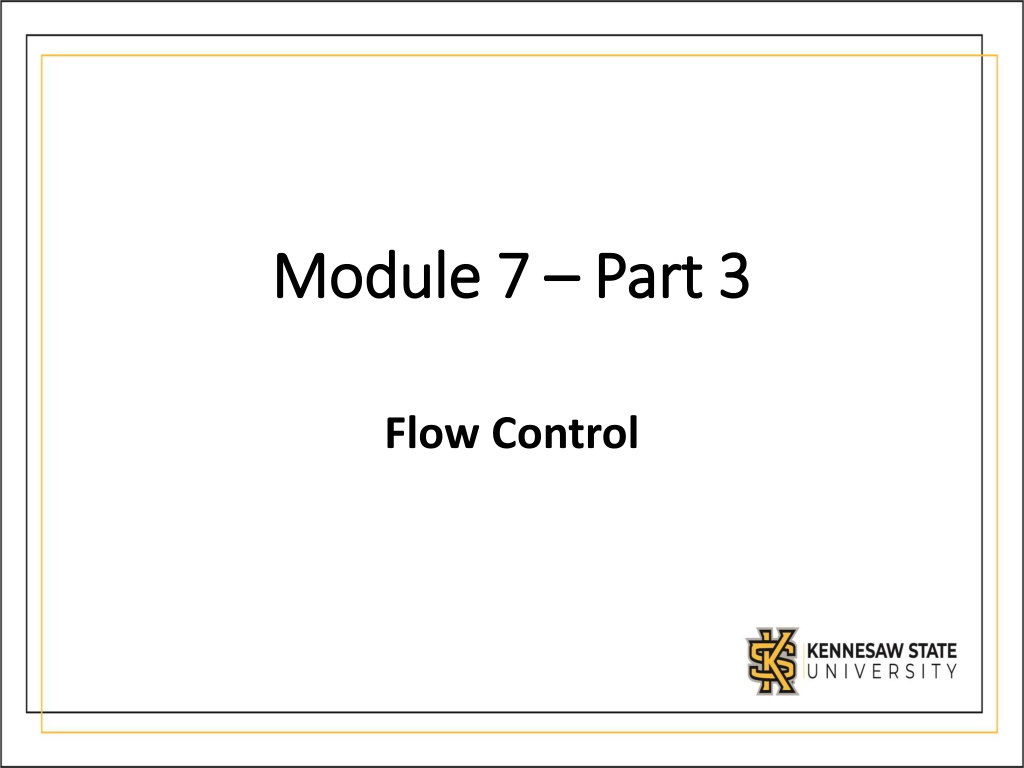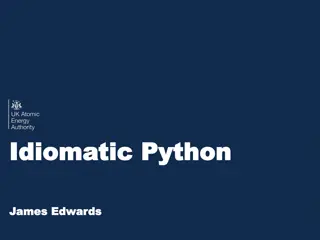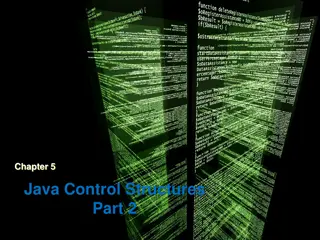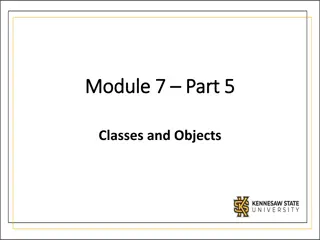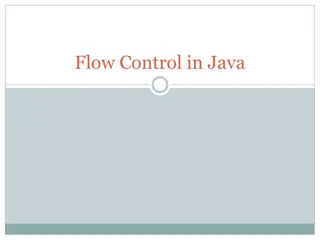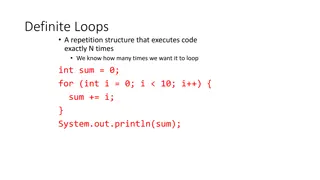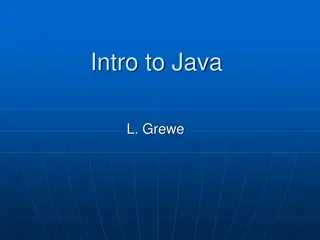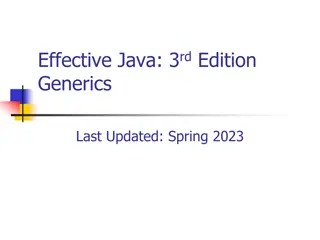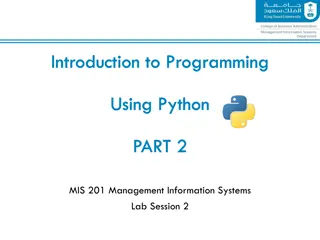Flow Control and Looping Constructs in Python and Java
Explanation on the similarities and differences between IF/ELIF/ELSE statements, Match vs. Switch statements, while loops, do-while loops, and for loops in Python and Java, highlighting syntax variations and unique features of each language's flow control and looping constructs.
Download Presentation

Please find below an Image/Link to download the presentation.
The content on the website is provided AS IS for your information and personal use only. It may not be sold, licensed, or shared on other websites without obtaining consent from the author. Download presentation by click this link. If you encounter any issues during the download, it is possible that the publisher has removed the file from their server.
E N D
Presentation Transcript
Module 7 Module 7 Part 3 Part 3 Flow Control
if-elif-else IF statements work the same in both languages, with only syntactical differences Python IF s condition doesn t need to be enclosed in parenthesis The IF s body is denoted by the presence of tabs Same applies to ELIFs Java IF s condition must be enclosed in parenthesis The IF s body must be enclosed in curly braces ELIFs are called ELSE IF Rules that apply to IFs also apply to ELSE-IFs
Match vs Switch Match statement Case datatypes can be of any type Cases can check for other conditions break , as a keyword, is not allowed Default case is called _ Switch statement All case datatypes must match the switch s data type Cases cannot check for other conditions Cases without a break; in them will fall through to the next case Default case is called default
while loops WHILE loops work the same in both languages, with only syntactical differences Python WHILE s condition doesn t need to be enclosed in parenthesis The WHILE s body is denoted by the presence of tabs Java WHILE s condition must be enclosed in parenthesis The WHILE s body must be enclosed in curly braces
do-while loops Python Do not exist in Python Java WHILE loops and DO-WHILE loops differ on when their condition is checked WHILE loops check their condition before starting an iteration DO-WHILE loops check their condition after finishing an iteration This means that DO-WHILE loops will always execute at least once, while WHILE loops may not execute at all
for loops Java has two different FOR loops: The regular FOR loop and the ENHANCED FOR loop What we know in Python as a FOR loop is the equivalent of an ENHANCED FOR loop in Java. These loops are better suited to traverse a collection of elements Syntax is largely the same, with a few key difference You must declare the element s type The iterable must be holding only the type declared above Instead of in , use : Strings are not iterable in Java
for loops Java s basic type of FOR loop has the following syntax for(initializer; condition; increment){ //body } These loops, sometimes called countable loops, are best for determining at a glance how many times the loop will run Initializer: Initializes the value of any sentinel variables being used Sentinel is the technical name of the variable being used to determine if the loop should run for another iteration Condition: Determines if the loop will run another iteration Increment: Updates the sentinel at the end of every iteration Roughly equivalent to using for x in range(y):
for loops You are not limited to a single sentinel initialization, a simple Boolean condition, or a simple increment The loop below will initialize x at 0 and y at 0 It will continue running as long as x is less than 10 OR y is greater than -5 After every iteration, x is incremented by 1 while y is decremented by 2
Traversing a string As mentioned, you cannot iterate through a string in Java If you need to retrieve a particular character in a string, use the charAt() method
Methods Methods behave the same at a fundamental level, but have major differences between them Python Defined using the def keyword Parameters can have default values Can return any data type Lack of return keyword makes the method return None Java Must be public, and must declare what datatype they return Methods inside the Driver class must always be static Parameters must declare their type and cannot have default values Must always return the datatype in the method s header Have a special type, void , which allows the method to return nothing Can be overloaded
Methods The method below doesn t always return a string and, as such, is considered to have a syntax error.
Methods The method below is of type void and, therefore, cannot return any values.
Methods Void methods canhave the return keyword, so long as it isn t returning any value. In this case, the return keyword is being used to signal that the method is done executing
Methods Difference in Parameters We don t always have all the information we need before calling a method. Or maybe we do, but we want to use some default value Python and Java handle this situation differently Python Method parameters can have default values If you want to use a default value, simply pass no argument for that parameter Java Method parameters cannot have default values Methods can instead be overloaded In an overload, you declare several methods with the same name, as long as they have a different list of parameters
Methods Difference in Parameters When using an overload, the computer knows which overload you are trying to use by the types of the arguments you pass Hence why the argument list between overloads must be different Changing a method s return type does not constitute an overload
